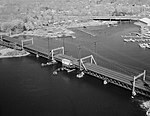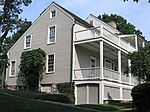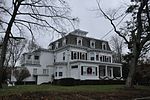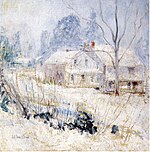Riverside station (Metro-North)
Buildings and structures in Greenwich, ConnecticutConnecticut building and structure stubsConnecticut transportation stubsMetro-North Railroad stations in ConnecticutNortheastern United States railway station stubs ... and 5 more
Pages with no open date in Infobox stationRailroad stations in Fairfield County, ConnecticutStations along New York, New Haven and Hartford Railroad linesStations on the Northeast CorridorUse mdy dates from January 2023

Riverside station is a commuter rail stop on the Metro-North Railroad's New Haven Line, located in the Riverside area of Greenwich, Connecticut. The Riverside Avenue Bridge crosses over the west end of the station platforms.
Excerpt from the Wikipedia article Riverside station (Metro-North) (License: CC BY-SA 3.0, Authors, Images).Riverside station (Metro-North)
River Road,
Geographical coordinates (GPS) Address Nearby Places Show on map
Geographical coordinates (GPS)
| Latitude | Longitude |
|---|---|
| N 41.032735 ° | E -73.594215 ° |
Address
River Road 11
06807
Connecticut, United States
Open on Google Maps










